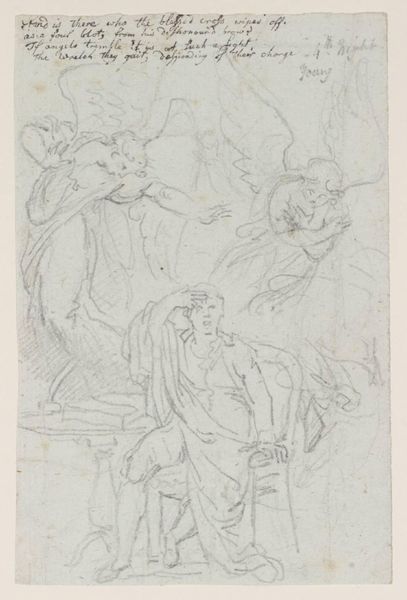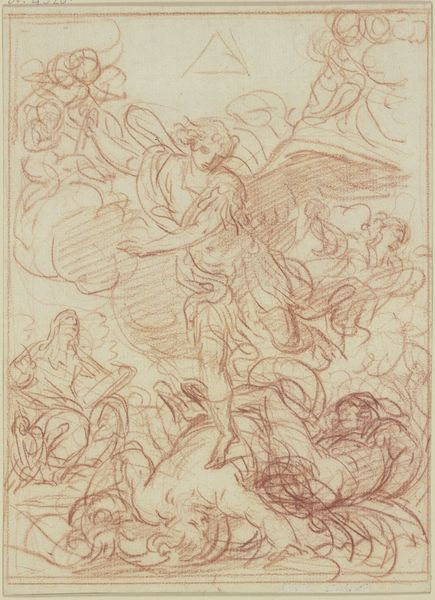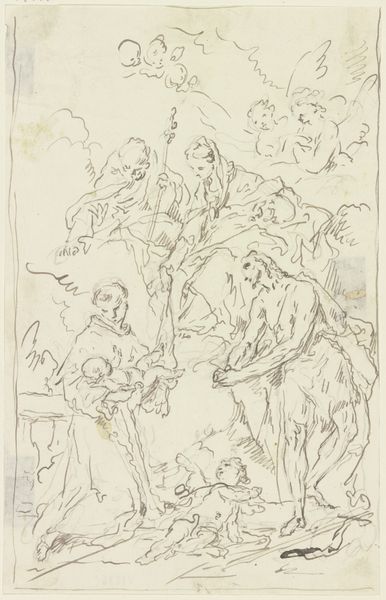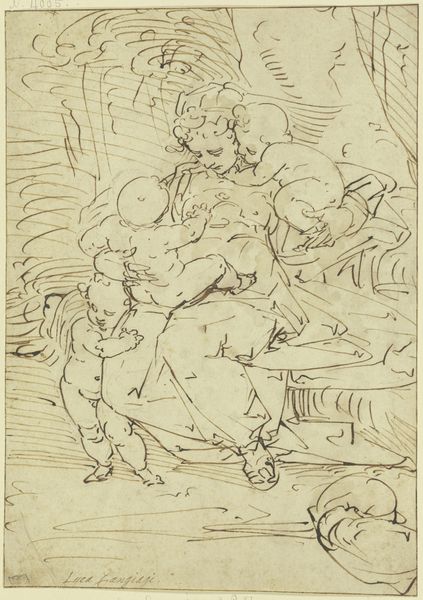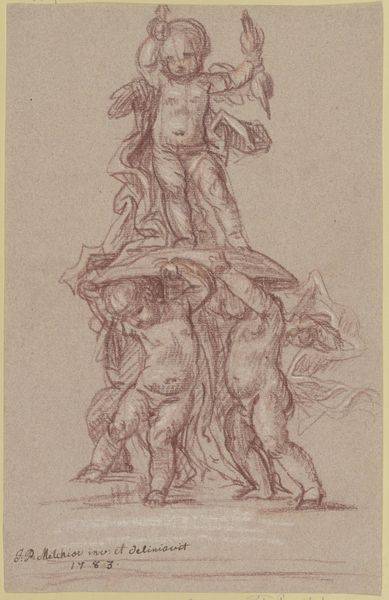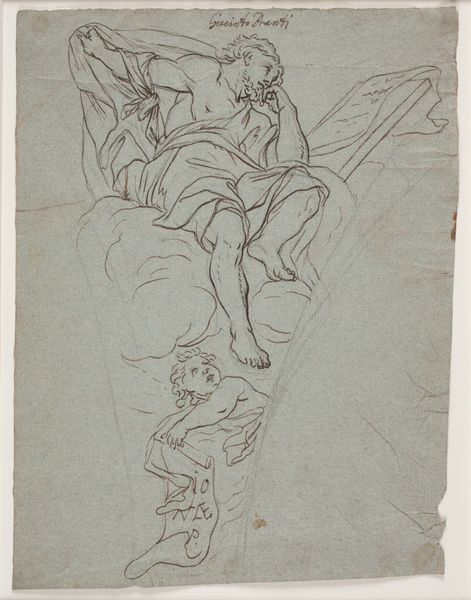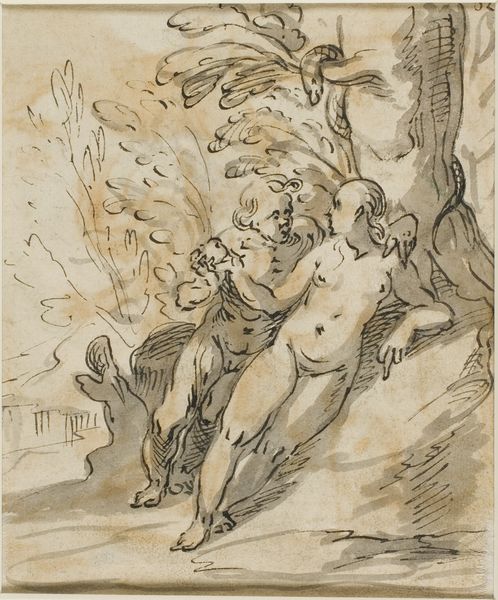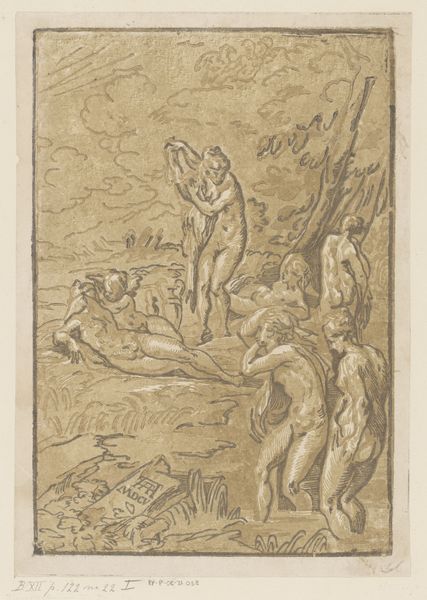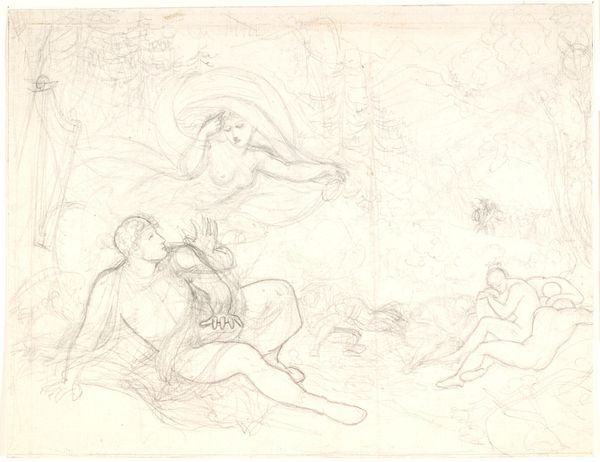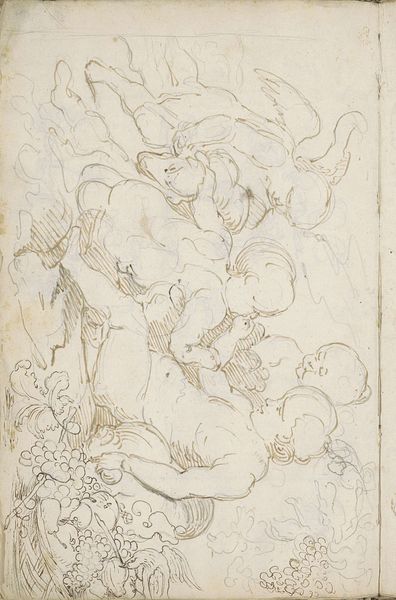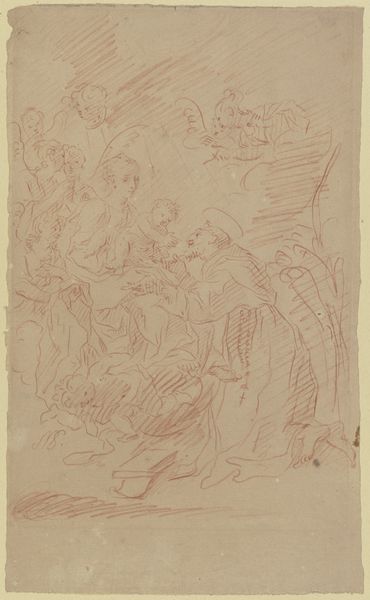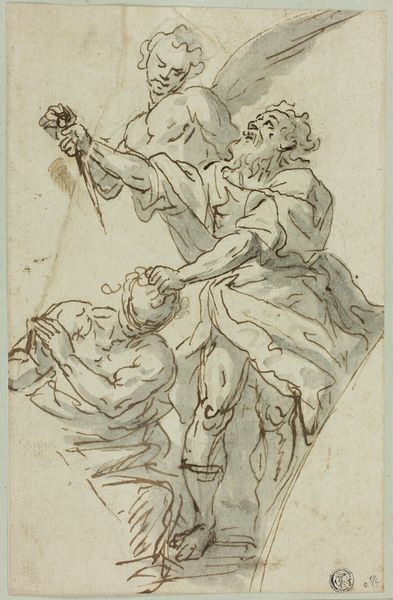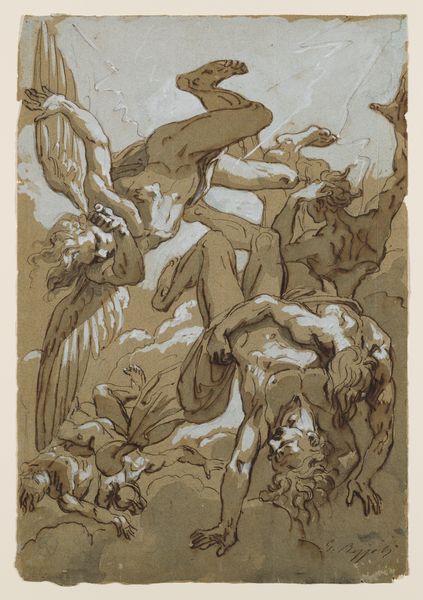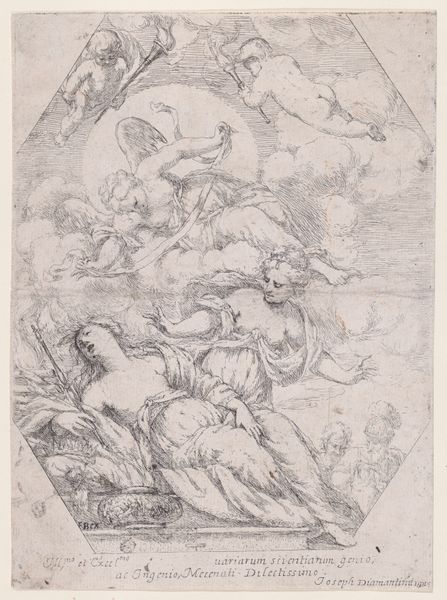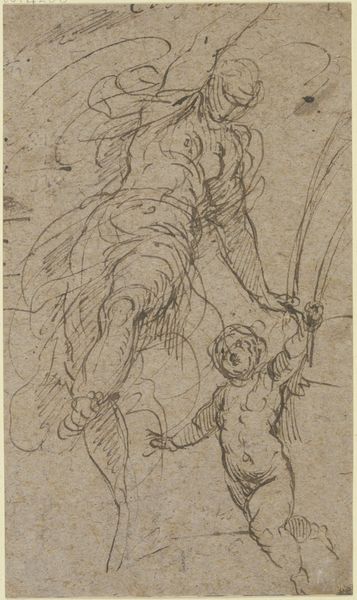
Illustration to the Tempest: Caliban, Ferdinand and Ariel 1836
0:00
0:00
drawing, print, ink, pencil
#
drawing
#
narrative-art
# print
#
etching
#
figuration
#
ink
#
romanticism
#
pencil
#
men
#
history-painting
Dimensions: Sheet: 5 11/16 × 3 9/16 in. (14.5 × 9 cm)
Copyright: Public Domain
Henry Courtney Selous made this graphite drawing, "Illustration to the Tempest: Caliban, Ferdinand and Ariel," some time in the 19th century. The sketch depicts characters from Shakespeare’s play "The Tempest," and in doing so, touches upon issues of colonialism and social hierarchy that resonate far beyond the play itself. Selous was working in Victorian England, at the height of the British Empire. "The Tempest," written centuries before, became a touchstone for thinking about the relationship between colonizer and colonized. Here, we see Ferdinand, the colonizing prince, standing upright, while Caliban, the native inhabitant of the island, cowers before him. Ariel, an airy spirit, floats above. The image presents a hierarchy of beings, echoing the social hierarchies of Victorian society, in which the British saw themselves as naturally superior. Understanding this drawing means delving into the history of British imperialism, the Victorian fascination with Shakespeare, and the ways in which art served to reinforce social norms. As historians, we examine such works through a lens of social and institutional context.
Comments
No comments
Be the first to comment and join the conversation on the ultimate creative platform.
